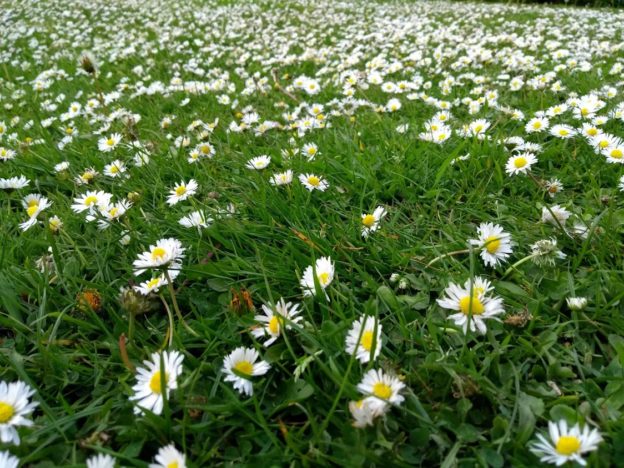When I first pondered this question, the only word that appeared in my head was ‘life’. I tend to take a rather wide and inclusive approach to practice so before I jump to that conclusion it is perhaps more helpful to start with a more focused definition:
- Buddha as the historical figure whose example still inspires centuries later.
- Dharma as the wise teachings he shared and which have been passed down to us through generations of ancestors.
- Sangha as groups of Buddhist practitioners seeking to learn and apply these teachings.
These definitions are probably valid but to me they feel too narrow. If I widen my perspective on them a little:
- Buddha becomes not just the long-dead historical figure but what he represents to us, an awakened perspective exemplified not just by the Buddha but also by generations of ancestors and teachers through to the present day.
- Dharmas not just as the formal Buddhist teachings but also wisdom wherever it is found.
- Sangha becomes those that we live or practice alongside.
Even these definitions feel a little exclusive and external and there is no need to stop there (although it can be so tempting to). We repeat in Jukai and Tokudo ceremonies “I am the Buddha, I am the Dharma, I am the Sangha” but do we actually feel that in our bones, through and through?
If, as we hear in our Zen services, “Buddha Nature pervades the whole universe existing right here now”, nothing can be excluded from it, even ourselves, no matter how much we try.
If Dharmas are the ever-present and ever-changing forms and circumstances of life and the opportunities and challenges they present for learning and development, we don’t get to pick and choose which Dharmas these are. We may well not like the opportunities for learning they present or feel that the benefit outweighs the cost but that doesn’t take them away. For example, I can see and have experienced learning opportunities from the current pandemic situation but I certainly don’t like the pandemic and the untold suffering it is creating. If I could only turn the clock back to a time BC (Before Corona) or pretend it wasn’t really happening I surely would. But that doesn’t make the situation go away, the unwelcome corona dharma is here.
If Sangha is all that supports us in our practice I’d have to include trees, mountains and rocks in mine, alongside the breeze from the open window, shafts of daylight, the cool drizzle on my face, all of which can (when I am open to them) remind me that life is always showing up. Sometimes I just don’t let myself notice this.
Buddha, Dharma and Sangha don’t actually change depending on how wide a perspective on them I am able and willing to take in any moment but my experience of them does. If I don’t seek to exclude things from my definitions, Buddha, Dharma and Sangha each become ‘life’ – with all its shades and textures, the wanted and unwanted, the pleasant and unpleasant. The fiction of them as external, as something outside myself, becomes harder to maintain. This seems to make a difference to how I apply them in my life and gives me a number of questions:
- What do I value and revere?
- What is it that I bow to? *
- Who and what am I open to learn from?
- How strongly do I resist the elements of life that I’d rather would go away?
- How do I take responsibility for my part in responding to life’s circumstances including giving and receiving support?
- And, because nothing is ever one-directional, how open am I to spotting and appreciating the ways in which everyone and everything is also responding to life?
Instead of a puzzle to be worked out these questions are more like never-ending practices. I can’t answer them with words or with one-off, final conclusions but can find myself experiencing and responding to them over and over, day by day or even moment by moment. I think they boil down for me to a recurring question of “how do I live this life?”. That to me I think is my understanding of Buddha, Dharma and Sangha.
*Admission – I have a habit, especially during retreats or in extended spells alone in nature, of bowing to anything – landscapes, sheep, cairns, disposable plastic wrapping, daisies. Most of the time this seems as ludicrous to me as it probably does to the sheep.

